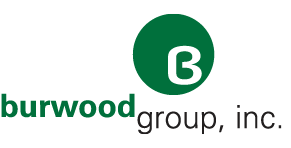5 Key Questions to Ask Every Consumption-Based IT Vendor
Organizations of all types and sizes are moving to an as-a-service IT model — on-premises, at the edge, and in the cloud. That's because it offers greater scalability and the ability to pay only for what is used — all while offloading the heavy lifting associated with operating IT.
Not all consumption-based IT vendors are the same. The stakes are high, so choose wisely.
Five Questions to Ask Your Vendor
The following are five best practices for successful end-user technology adoption:
1. What is your real consumption model?
Multi-year leasing? Static subscription pricing? Pay per use? #1 Hardware ownership with outsourced operations? Look for a pay-per-use model. Unlike a lease or subscription, a pay-per-use model is based on actual usage of your IT resources so you only pay for what you use. It should:
Flexe up and down depending on usage
Allow you to pay for IT resources as needed
Minimize upfront capital expenditures
2. Do you offer metering?
Does your solution meter actual usage? How often does metering occur? #2 Can I track my own metered usage and costs? Look for true metering. Metering should capture granular usage data for each service to enable accurate billing and deep, actionable insights.
Provide granular visibility into usage and costs
Help achieve 100% economic utilization
Enable active capacity management to deliver capacity ahead of demand
3. How deep is your portfolio?
Can you run your top workloads as a service? How about a private cloud? Containers? VMs? High-performance computing? Look for everything as a service. Vendors should offer a wide array of as-a-service offerings that span on-premises, edge, and hybrid cloud. Your selected vendor should be able to:
Deliver business outcomes faster with purpose-built services
Accelerate innovation with rapid expansion of additional capacity and new workloads
Integrate complementary technologies for more complete offerings
4. How long have you been doing this?
Solutions refined over time based on experience? #4 Customer references? Strong financial model? Look for experience. Period. Evaluate factors like how long the vendor has offered the service, number of customers, retention rates, annual growth, and total contract value. This maturity will benefit you in multiple ways:
Speed time to market with trusted reference architectures, expertise, and automation
Reduce risk with mature metering, monitoring, and active capacity management
Protect investments with strong financial arm
5. Do I get the right services with that?
What services are included—and what costs extra? Do I need to invest in new skills training? Who’s responsible for daily upkeep of the infrastructure? Look for a trusted advisor. An as-a-service experience should include infrastructure maintenance, metering, monitoring, and active capacity management, as well as the ability to add additional services as needed.
Simplify IT with comprehensive operational services
Remove the “heavy lifting” from internal staff
Accelerate business outcomes with specialized skills and resources
This post is sponsored by Hewlett Packard Enterprise, a trusted Burwood Group partner. HPE Greenlake can help you radically simplify IT, lower costs, and free up resources for other priorities. Contact Burwood Group to learn more today.


